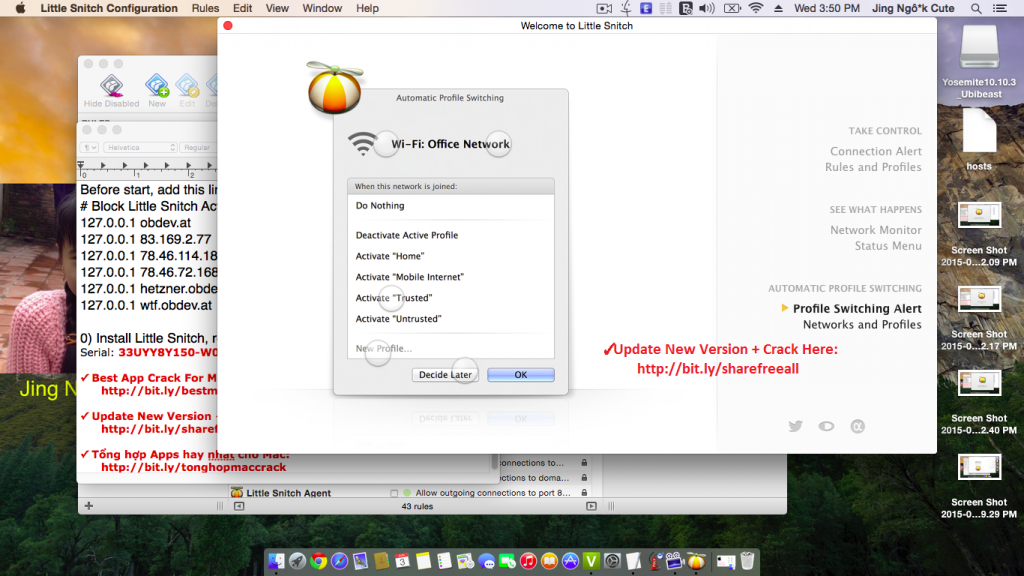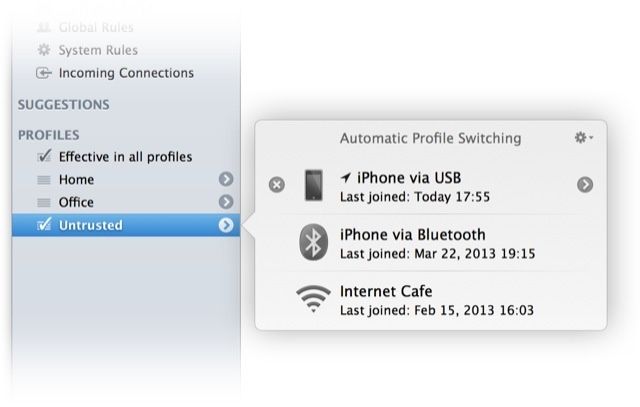

You’ll find many apps make an extraordinary number of different connections, like Adobe’s Creative Cloud manager. But it quickly settles down, even if you use a variety of software.
Little snitch 4.5 license key mac install#
You’ll have to allow sites and items referenced on sites one at a time as you visit, but that offers some people more piece of mind against unwanted Web-based trackers and even malware.As with similar software requiring training, you’ll go through a bit of annoyance after you install Little Snitch and restart your Mac, and then start running software for the first time with the app installed. But even these passes are explicitly allowed via rules that you can view, with descriptions, in the Little Snitch Configuration app.You can be concerned enough about Internet safety that you changed prefab rules, like requiring individual approval of domain access in Safari, instead of letting it use all those ports. Many OS X system daemons, autonomous bits of low-level software, also get pre-approved. (An IP address is a destination, like an apartment building a port is like a specific apartment within the building.)Little Snitch comes configured to allow common activities.įor example, Safari requests data from port 80 (non-secure Web connections) and port 443 (https connections) to pass through without notice. For instance, you can approve connections to all ports on a domain, or click on the allow/deny dialog to specify a port.

Click a button here and there-like a downward-pointing arrow to the left of the Deny button-and you can expand options and limit choices. The default view offers simple details that shouldn’t frighten someone with no real technical knowledge as long as they get what a domain name represents and what apps are trying to do. Clicking Allow or Deny adds a rule to Little Snitch’s configuration, bypassing this dialog in the future for varying degrees of specificity and periods of time.The utility lets you drill down nearly everywhere. Using the previous example with a browser that’s not pre-approved, you might see an alert that Google Chrome is trying to connect to. Should Little Snitch let it proceed, and, if so, for how long and with what limits? IDGThis expanded network-connection popup shows information about the app and all the duration options for allowing or denying.For previously unknown connections, Little Snitch presents a dialog box that shows you the requesting app’s icon, its name, and what it’s attempting to do. For instance, launch Google Chrome, and Little Snitch warns you that the browser is attempting to connect to (to check for updates, ostensibly). Little Snitch 4: Watching for chatty appsAs in, Little Snitch’s most obvious use is in alerting you to the network activity of applications and low-level software. It was only in version 3 that it added inbound connection management, too, which made it much more useful against attacks.


Little snitch 4.5 license key mac mac#
Enabling it likely causes more problems and confusion for less-experienced users than leaving it off, but a Mac with unfettered bidirectional access isn’t a good thing, either.That’s why I’ve recommended Little Snitch since version 1, because it lets you keep an active but not irritating eye on what your Mac is doing. The firewall option in the Security & Privacy system preference pane is extremely coarse and lacks necessary features. With Little Snitch for Mac, users can prevent personal information from being sent out, although its limited features may not be worth the program's price. But the app has significant updates for visualizing connections and improves how it explains what apps are trying to do.It’s bizarre that this many decades into the net’s evolution, Apple still doesn’t include strong tools enabled by default that restrict access to your Mac or examine connections from macOS or apps you’re running out to the Internet. Version 4 refines and extends this friendly firewall, and if you’ve used it or looked at it in the past, you’ll find it mostly familiar. The Internet is a terrifying place, and Objective Development’s ($45) has tried for many years to help keep your Mac locked down by monitoring connections and letting you control inbound and outbound traffic.


 0 kommentar(er)
0 kommentar(er)
